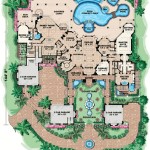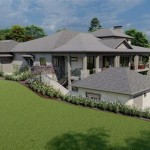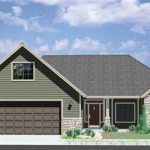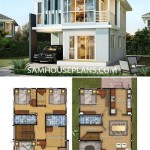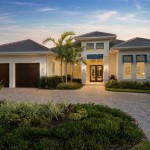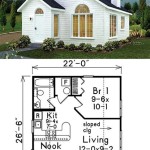Plans For A Shed House: A Comprehensive Guide
The concept of a shed house, often referred to as a ‘shed to house’ or ‘shed dwelling,’ involves converting a pre-existing or newly constructed shed into a functional and habitable living space. This endeavor can offer a cost-effective alternative to traditional housing, particularly in areas with high property values or for individuals seeking a minimalist lifestyle. However, successful shed house construction hinges on meticulous planning, adherence to building codes, and a thorough understanding of the conversion process. This article provides a comprehensive overview of the key considerations involved in planning for a shed house, covering essential aspects from initial design to final execution.
Before embarking on a shed house project, a crucial first step is to assess local zoning regulations and building codes. These regulations vary significantly depending on the jurisdiction and can dictate permissible building sizes, setbacks, and required permits. Failure to comply with these regulations can result in hefty fines, legal complications, and even the potential demolition of the non-compliant structure. It is advisable to consult with local planning authorities or hire a qualified building inspector to ensure that the proposed shed house meets all relevant requirements. This proactive approach can save considerable time, money, and frustration in the long run.
The size and type of shed will significantly impact design and construction considerations. While smaller sheds might be suitable for tiny homes or weekend retreats, larger sheds can accommodate more elaborate living arrangements. Sheds can be broadly categorized into various types, including gable sheds, barn sheds, lean-to sheds, and saltbox sheds, each offering distinct aesthetic and structural characteristics. The chosen shed type should align with the intended use of the shed house and the overall design aesthetic. Thoroughly assess the existing or proposed shed to determine its structural integrity and suitability for residential occupancy. Modifications may be necessary to reinforce the foundation, walls, and roof to meet building code requirements for habitable structures.
Key Point 1: Foundation and Structural Integrity
The foundation is the cornerstone of any building, and a shed house is no exception. Existing shed foundations often need to be upgraded or replaced to meet residential building codes and ensure the structure's long-term stability. Common foundation options include concrete slabs, pier and beam foundations, and concrete block foundations. The choice of foundation depends on factors such as soil conditions, the size and weight of the shed, and local building codes. A proper foundation prevents settling, shifting, and moisture intrusion, all of which can compromise the structural integrity of the shed house.
Beyond the foundation, the structural integrity of the walls and roof is paramount. Sheds are typically designed to withstand lighter loads than residential buildings, so reinforcement may be necessary. This can involve adding studs to the walls, reinforcing the roof trusses, and ensuring proper bracing throughout the structure. The type and extent of reinforcement will depend on the specific shed design and local building code requirements for wind and snow loads. Engaging a structural engineer to assess the existing structure and recommend necessary reinforcements is a prudent step.
Waterproofing is a critical aspect of ensuring the long-term durability of the shed house. Proper sealing of walls, roof, and foundation is essential to prevent water damage and mold growth. This can involve applying weather-resistant coatings, installing flashing around windows and doors, and ensuring proper drainage around the foundation. Ignoring waterproofing can lead to costly repairs and compromise the health and safety of the occupants.
Insulation is crucial for creating a comfortable and energy-efficient living space. Insulating the walls, roof, and floor of the shed house will help regulate temperature, reduce energy consumption, and minimize noise transmission. Various insulation options are available, including fiberglass batts, spray foam, rigid foam boards, and cellulose insulation. The choice of insulation material should consider factors such as R-value (thermal resistance), cost, ease of installation, and environmental impact. Proper insulation is essential for creating a habitable and sustainable shed house.
Key Point 2: Essential Utilities and Systems
Converting a shed into a habitable dwelling necessitates the installation of essential utilities and systems, including plumbing, electrical, and HVAC (heating, ventilation, and air conditioning). Careful planning is required to ensure these systems are installed safely, efficiently, and in compliance with local building codes.
Plumbing involves installing water supply lines, drain lines, and fixtures such as sinks, toilets, and showers. Connecting the shed house to the municipal water and sewer system is typically the most straightforward option, but alternative solutions such as well water and septic systems may be necessary in rural areas. Proper venting of drain lines is crucial to prevent sewer gases from entering the living space. All plumbing work should be performed by a licensed plumber to ensure compliance with local codes and prevent potential water damage or health hazards.
Electrical systems must be designed and installed to meet the electrical demands of a residential dwelling. This includes installing wiring, outlets, switches, lighting fixtures, and a circuit breaker panel. The electrical system should be sized appropriately to handle the anticipated electrical load, and all wiring must be properly grounded to prevent electrical shocks. Hiring a licensed electrician is essential to ensure the electrical system is installed safely and in compliance with local electrical codes.
HVAC systems provide heating, cooling, and ventilation to maintain a comfortable indoor environment. Options include traditional forced-air systems, ductless mini-split systems, and radiant heating systems. The choice of HVAC system depends on factors such as climate, budget, and energy efficiency goals. Proper ventilation is crucial for maintaining indoor air quality and preventing moisture buildup. Consider installing exhaust fans in bathrooms and kitchens to remove excess moisture and odors.
Proper ventilation is a vital component of a healthy and comfortable living environment. Adequate airflow helps to prevent moisture buildup, reduce the risk of mold growth, and circulate fresh air throughout the shed house. This can be achieved through a combination of natural ventilation, such as windows and doors, and mechanical ventilation, such as exhaust fans and whole-house ventilation systems. Ensuring proper ventilation is particularly important in smaller enclosed spaces like shed houses.
Key Point 3: Interior Design and Functionality
The interior design of a shed house should prioritize functionality and maximize the use of available space. Careful planning is essential to create a comfortable and livable environment within the often-limited confines of a shed structure. Consider the flow of traffic, the placement of furniture, and the overall aesthetic of the space.
Effective space utilization is crucial in a shed house. Employing space-saving strategies, such as built-in storage, multi-functional furniture, and vertical storage solutions, can help maximize the usable area. Consider using loft spaces for sleeping or storage to free up floor space. Utilizing wall-mounted shelving, hanging organizers, and other vertical storage solutions can help keep the space organized and clutter-free.
When selecting materials for the interior of a shed house, prioritize durable, low-maintenance options that are resistant to moisture and wear. Consider using waterproof flooring materials in bathrooms and kitchens, and select paints and finishes that are easy to clean and resistant to mold growth. Choosing durable materials will help extend the life of the shed house and minimize maintenance requirements.
Natural light can significantly enhance the feeling of spaciousness and comfort in a shed house. Maximize natural light by incorporating large windows and skylights into the design. Consider the placement of windows to take advantage of sunlight patterns and views. Supplement natural light with artificial lighting, such as LED recessed lighting, task lighting, and ambient lighting, to create a well-lit and inviting space.
Storage solutions are paramount in small living spaces. Consider incorporating built-in storage options such as drawers under beds, shelving units within walls, and overhead cabinets. Maximize the use of vertical space with tall and narrow storage units. Utilizing multi-functional furniture, such as sofa beds and ottomans with storage compartments, can also help to optimize storage capacity.
Finally, prioritize energy efficiency in the design of the shed house. Install energy-efficient windows and doors, use LED lighting, and choose energy-efficient appliances. Consider incorporating renewable energy sources, such as solar panels, to reduce reliance on traditional energy sources. Implementing energy-efficient measures will help lower utility bills and minimize the environmental impact of the shed house.
Planning for a shed house requires meticulous attention to detail, a thorough understanding of building codes, and a commitment to quality craftsmanship. By addressing the key considerations outlined in this article, individuals can create a safe, comfortable, and sustainable living space that meets their needs and budget.

Shed To Home 16x40 Floor Plan

Shed Homes The House Sunshine Coast Get Started Today

Tiny Home Floor Plan Gallery Robin Sheds

Pin Page

Our Shed To Tiny Home Layout Bath House Plans

Small House Plans With Shed Roof

Mercury House Plan Modern Small Shed Roof Home Design

Plans For Building Shed Homes

Pin Page

Modern And Cool Shed Roof House Plans Houseplans Blog Com



